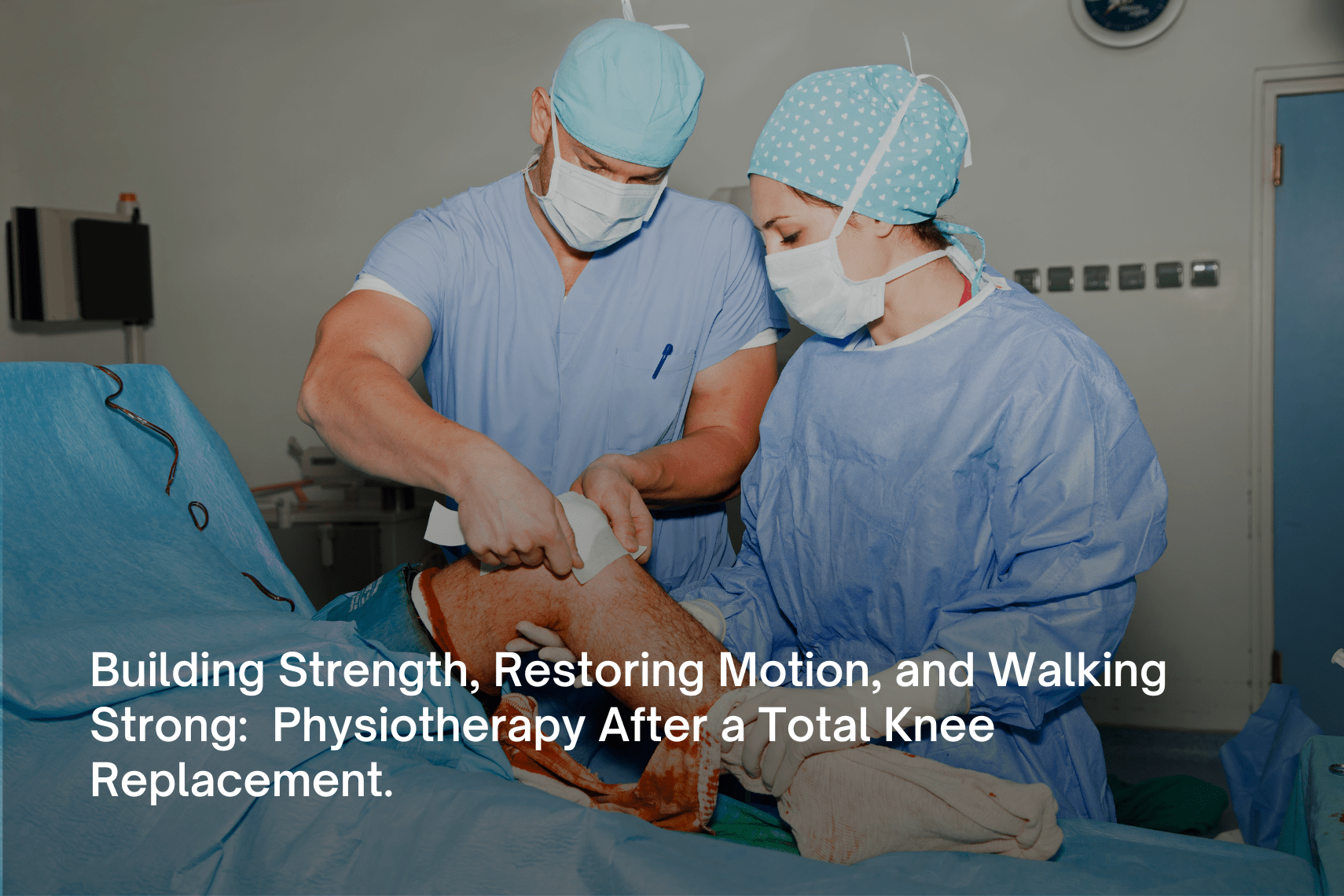
Surgery is most definitely a scary thing, terrifying in fact. Having to imagine a person cutting your body while you’re asleep, yikes! Sounds like something you pull out of a horror movie! But in reality, it isn’t all that bad, considering the overwhelming benefits one may receive afterwards.
There are thousands of different types of surgeries out there, but for now, let’s talk a little bit about total knee replacement (TKR). When it comes to a total knee replacement, your surgeon aims to make the patient’s quality of life better in terms of joint mobility and pain. It is an extremely common surgery. According to an article written by the Times of India, 2,50,000 people undergo TKR every year as per a 2022 statistic.
Once a patient has undergone the surgical procedure, he’s all cured! Right? Wrong! Physiotherapy emerges as a vital ally in this transformative process, playing a crucial role in helping individuals regain mobility, independence, and a renewed zest for life.
Imagine taking a step forward, pain-free, with newfound strength and confidence. For individuals who have undergone total knee replacement surgery, this seemingly simple act becomes a cherished milestone on their journey towards recovery. Physiotherapy, often viewed as a cornerstone of post-operative care, offers a comprehensive roadmap towards restoring normal function and facilitating a seamless return to an active lifestyle. It holds the power to reshape the narrative surrounding knee replacement recovery, dispelling any fears or uncertainties that may overshadow the path to progress
In this article, we dive into the remarkable journey of total knee replacement recovery, with a particular focus on the indispensable role of physiotherapy. Dispelling the notion of a daunting or intimidating experience, it is essential to understand that the process of post-surgery physiotherapy is tailored to enhance the overall well-being of individuals. It harnesses the combined expertise of skilled physiotherapists, empowering patients to embrace each session as a step towards a brighter, pain-free future.
After the surgery, the patient may feel a lot of pain initially, which is an unfortunate by-product of the process. But worry not! Pain is a normal thing and it subsides withing a week or two. The patient will be visited by his/her physiotherapist on the first postoperative day, and he/she will assess the patient’s current condition.
There are a wide variety of tests and scales that are used by therapists to help them understand the current state of the patient’s knee. For the initial stages of recovery, they use scales such as KOOS, FIM, NPRS, VAS, and HOOS. After getting a broad idea about what’s going on, the therapist usually starts therapy.
Therapy begins with basic exercises such as ankle and toe movements, static quads, straight-leg raise, and partial knee bending. There are many other different types of exercises which can be followed; it all depends on how creative the physio is. It is crucial for the patient to do these exercises as frequently as possible to prevent complications such as DVT and fixed-flexion deformity. It is not uncommon for individuals to suffer from these complications if proper physiotherapy is not done.
After 24 to 48 hours, the patient is fully capable of walking with aid, and can fully bear all their weight on the limb, for he/she now has muscle strength and reduced pain. The patient starts using a walker to support themself and the physio will be right next to them. This is a joyous occasion for both the patient and the physio because this is a sign of a successful surgery.
Obviously, the person’s gait and balance will not initially pertain to what is normal. After a week, further strength training should be done to ensure a low risk of falls. The usual cause for gait abnormalities may be extension lag or severely reduced knee flexion. During the second phase of treatment, which is 2 to 4 weeks, emphasis must be put on reducing extension lag to zero and improving knee flexion to a minimum of 105 degrees.
It is vital to measure the angles accurately, otherwise, a human error may cause a decline in performance and will give a false depiction of the outcome of the surgery. To prevent such mishaps, Fitknees can be used to accurately measure knee flexion and extension lag. Without the use of accurate measuring tools, there won’t be any credibility to the therapy provided.
After achieving those goals, the patient enters phase three, which lasts from week 4 to week 6. During this phase, the physio concentrates on balance and proprioception training. These exercises help patients to reduce their risk of falls and to prevent unwanted injuries. Exercises include single-leg standing and dura disk exercises. Fitknees also plays a role here as the device is capable of quantifying balance and proprioception. With the help of data and numbers, therapists can record prognoses effectively.
In the journey of total knee replacement recovery, one thing becomes abundantly clear: physiotherapy is not just important—it is essential. It is the key that unlocks the door to a pain-free, mobile, and vibrant future for individuals who have undergone this transformative surgery.
Physiotherapy serves as a guiding light, offering a comprehensive roadmap towards restoring normal function and facilitating a seamless return to an active lifestyle. It dispels the notion that the post-surgery process is scary or daunting, instead replacing it with hope, empowerment, and a renewed zest for life.
The expertise of skilled physiotherapists becomes instrumental in this process, tailoring treatment plans to enhance the overall well-being of individuals. Through a combination of exercises, tests, and personalized care, physiotherapists empower patients to take each step towards recovery with confidence and determination.
For more info on how to track pre & post op recovery using fitkness click on :https://ashva.xyz/fitknees/
